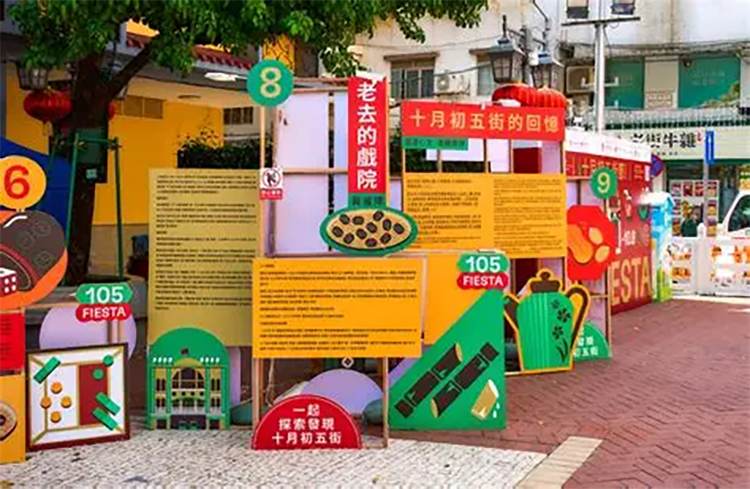Explore Macau Food on October Fifth Street: Classic Heritage Flavors
Stroll October Fifth Street: Classic Macau Heritage
Introduction: Old Macau’s Everyday Charm
In the northwest of the Macau Peninsula lies an 800-meter lane tucked between modern bustle and old city life — October Fifth Street. Named for the Portuguese revolution of October 5, 1910, the street’s spirit is rooted in a centuries‑old blend of Lingnan Chinese and Portuguese influences. Once Macau’s busiest commercial artery, it now preserves authentic local scenes: steam rising from century‑old tea houses, herbal shops selling century recipes, and seafood stores piled high with preserved goods. Walking here feels like opening a living history book — every tile and neon sign tells a story.
1. Soul Summary: A Living Museum of East‑West Macau
October Fifth Street is a “covered arcade time corridor” built around early 20th‑century Lingnan shophouses, filled with Portuguese tiles, long‑established tea houses, traditional souvenir shops, and everyday neighborhood life. It’s not a closed tourist attraction but a place where locals still buy groceries, drink morning tea, and chat.
Unique Selling Points:
– Perfect for architecture lovers: one of Macau’s best‑preserved East‑West hybrid shophouse districts.
– Food heaven: from century‑old dim sum to street herbal teas, a concentration of Macau food culture.
– Living intangible heritage: herbal tea preparation and traditional pastry making continue on the street.
2. Historical Roots: From Seaside Marketplace to Neighborhood Lane
Why the name?
October Fifth Street commemorates the Portuguese republican victory on October 5, 1910, but its history reaches back to the Ming and Qing eras. It began as a seaside trade lane where fishermen and merchants met; land reclamation later turned it into an inland street. In the early 1900s, covered shophouses rose, shaping the street you see today.
Cultural symbols and daily life:
– Famous old brands:
– Da Lung Feng Tea House: Open since the 1930s, known for Cantonese dim sum and crab porridge; regulars still gather for morning tea.
– Yubao Herbal Tea: Five generations serving herbal remedies and cooling drinks to beat Macau’s humidity.
– Street theatre of life: elders carry baskets at dawn, neighbors gossip under the arcades in the afternoon, and souvenir shop lights make almond cookies glow at dusk.

3. Architecture & Streetscape: Nanyang Dreams under the Arcades
Architectural highlights
The row of covered arcades (ke‑lou) is the street’s biggest attraction:
– Lingnan base: carved stone windows, wooden louvered doors, blue‑gray brick walls.
– Portuguese accents: colorful mosaic tiles, arched verandas, wrought‑iron railings.
– Detail lovers: look for traditional Chinese character signboards, handwritten price lists, and vintage neon.
Must‑see spots:
– The arcade walkways: perfect for photography and rain‑proof strolling.
– Da Lung Feng façade: green‑and‑white tiles and old ceiling fans evoke classic cinema sets.
– The dried seafood stretch: salted fish, fish maw, and shrimp paste stacked in bamboo baskets, filling the air with an ocean scent.
4. Macau on the Palate: From Morning Tea to Midnight Snacks
Unmissable eats:
– Breakfast: Char Siu buns and crab porridge at Da Lung Feng, with a pot of Pu‑er tea.
– Snacks:
– Yubao Herbal Tea: try Twenty‑Four Herb tea or sweet sugarcane and vetiver water.
– Koi Kei Bakery: freshly baked almond cookies and pork jerky — sample before buying.
– Hidden gem: Guang Hing‑long oyster sauce and shrimp paste at the end of the street — a local home‑cook secret.
Dining atmosphere
Whether you sip congee at a folding table under the arcade or sit beneath a spinning fan in an old tea house, eating here is a nostalgic experience.

5. Experiences & Events: Street Festivals that Keep Macau Alive
Regular experiences:
– Herbal tea demonstrations: watch a master brew herbs in a copper pot.
– Pastry workshops: Koi Kei’s cookie‑pressing demonstrations show traditional methods.
Festival highlights:
– Lunar New Year: dragon and lion dances wind down the street, red lanterns drape the arcades.
– Mid‑Autumn Night: neighbors set up lantern stalls and children run with paper rabbit lanterns.
6. Itinerary Tips: A Half‑Day Walking Guide
Recommended duration: 2–3 hours (including food stops).
Best times: morning for breakfast and tea culture; evening for lights and local atmosphere.
Suggested routes:
– Culture route: October Fifth Street → Macau Museum → Ruins of St. Paul’s (about 15 minutes on foot).
– Food route: breakfast on the street → Camp Market for lunch → Fisherman’s Wharf or Fortaleza do Monte for dinner.

7. Practical Tips
– Payment: older shops prefer cash (MOP); souvenir stores accept credit cards.
– Language: Cantonese is widely spoken; staff usually know basic English and menus are often Chinese‑Portuguese bilingual.
– Note: arcades can be narrow — avoid midday tour group peaks.
Conclusion: Macau Beyond the Casinos
October Fifth Street may not glitter like a casino, but it offers Macau’s truest flavor — a living record of East‑West exchange and generations of neighborhood life. When you walk here, touch the shophouse bricks, taste a just‑baked egg tart, and listen to locals chat over tea. That everyday warmth is what makes Macau unforgettable.


